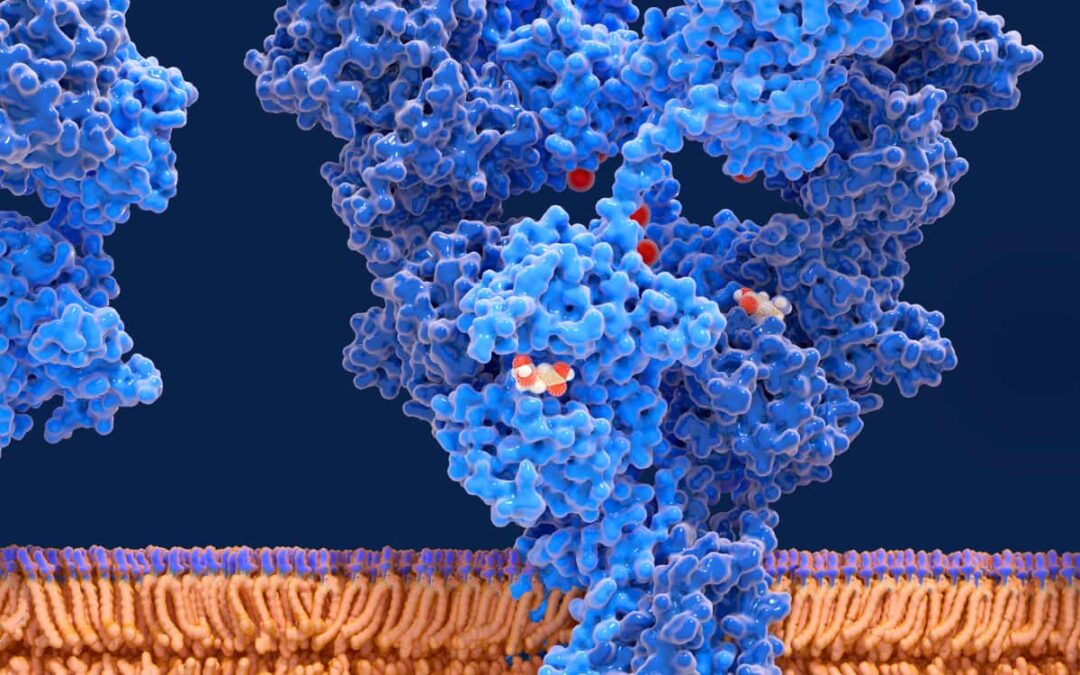5-HT2A & GABA RECEPTORS: IMPACT ON MOOD, ANXIETY &NATURAL MODULATION
Our brain’s intricate neurochemical system plays a crucial role in shaping our emotions, anxiety levels, and overall mental well-being. Two critical players in this system are the 5-HT2A serotonin receptors and the gamma-aminobutyric acid (GABA) receptors. While both influence mood and cognitive function, they operate through distinct mechanisms. This article explores their key differences, how they impact mood and anxiety, and how diet, exercise, environment, and botanicals can modulate their function naturally.
5-HT2A vs. GABA Receptors: A Fundamental Difference
5-HT2A Receptors: The Psychedelic & Cognitive Gatekeepers
The 5-HT2A receptors are a subset of serotonin (5-HT) receptors predominantly found in the brain’s cortex. They are implicated in mood regulation, cognition, and perception. Activation of these receptors enhances excitatory neurotransmission, meaning they increase neuronal activity. They are often associated with:
-
- Psychedelic effects: Many classic psychedelics like psilocybin and LSD work by acting as agonists on the 5-HT2A receptors, leading to altered perception and mood enhancement.
- Cognitive flexibility: They play a role in learning, memory, and creative thinking.
- Mood disorders: Dysregulation of 5-HT2A receptor activity has been linked to depression, anxiety, and schizophrenia.
GABA Receptors: The Brain’s Natural Inhibitors
GABA receptors, on the other hand, serve as the primary inhibitory system in the brain. They reduce neuronal excitability and help promote calmness, relaxation, and sleep. The two main types of GABA receptors are:
-
- GABA-A: Fast-acting inhibitory receptors targeted by benzodiazepines (e.g., Valium, Xanax) and alcohol.
- GABA-B: More slowly acting receptors involved in muscle relaxation and long-term anxiety relief.
When GABA activity is low, it can lead to heightened anxiety, stress, and even seizures, while increased GABAergic activity promotes relaxation and improved mood stability.
Botanicals That Modulate 5-HT2A and GABA Receptors
Nature provides several botanicals that can either enhance or regulate the activity of these receptors, offering a holistic approach to mental well-being.
Botanicals That Act on 5-HT2A Receptors
-
- Psilocybin Mushrooms – Act as direct agonists, promoting neuroplasticity and enhanced mood.
- Ayahuasca (DMT and Harmala Alkaloids) – Modulates serotonin receptors and has profound antidepressant effects.
- Rhodiola Rosea – An adaptogen that influences serotonin signaling and supports cognitive function.
- Ginseng – Can enhance serotonin activity and reduce fatigue-related mood disturbances.
- Mucuna Pruriens – Contains L-DOPA, which influences dopamine and serotonin levels.
Botanicals That Act on GABA Receptors
-
- Amanita Mushroom (Muscimol) – A powerful GABA agonist that can impact anxiety, sleep and pain.
- Valerian Root – Enhances GABA signaling, leading to reduced anxiety and improved sleep.
- Kava Kava – Contains kavalactones that directly interact with GABA receptors to promote relaxation.
- Passionflower – Increases GABA activity and helps alleviate stress and insomnia.
- Chamomile – Rich in apigenin, which binds to GABA receptors to induce relaxation.
- Lemon Balm – Enhances GABA activity and has mild sedative effects.
Botanicals That Affect Both 5-HT2A and GABA Receptors
-
- Ashwagandha – Modulates both serotonin and GABA activity, reducing stress and anxiety while improving cognitive resilience.
- Holy Basil (Tulsi) – Influences serotonin pathways and has anxiolytic effects through GABA modulation.
- Lavender – Known to enhance serotonin transmission while also promoting GABAergic relaxation.
- Magnolia Bark – Contains honokiol, which interacts with both GABA and serotonin receptors to alleviate stress and anxiety.
Lifestyle Factors That Influence 5-HT2A and GABA Receptors
Diet’s Role in Neurotransmitter Balance
-
- Tryptophan-rich foods (turkey, eggs, nuts) support serotonin production, potentially influencing 5-HT2A function.
- Fermented foods (kimchi, yogurt, kombucha) enhance gut microbiome health, which is crucial for neurotransmitter balance.
- Magnesium-rich foods (spinach, almonds, dark chocolate) support GABA receptor function, reducing anxiety.
Exercise and Neurochemical Regulation
-
- Aerobic exercise (running, swimming) enhances serotonin release and can regulate 5-HT2A receptor function.
- Strength training increases GABA levels, reducing stress and anxiety.
- Yoga and meditation have been shown to upregulate GABAergic activity, promoting relaxation and emotional resilience.
Environmental Impact on Mood Regulation
-
- Natural light exposure increases serotonin production, improving mood and circadian rhythms.
- Green spaces and nature exposure enhance GABAergic activity and reduce cortisol, the stress hormone.
- Digital detox helps balance dopamine and serotonin levels, indirectly influencing 5-HT2A receptor activity.
Conclusion
Both the 5-HT2A and GABA receptors play significant roles in mental health, albeit through opposing mechanisms – excitatory versus inhibitory. By understanding how these receptors function, we can make informed choices about diet, exercise, botanicals, and environmental factors to naturally enhance mood, reduce anxiety, and support overall brain health. Whether through psychedelic-assisted therapy for depression or natural GABAergic botanicals for relaxation, integrating holistic approaches can help optimize mental well-being in a sustainable way.
Go Get Happy & Calm!

